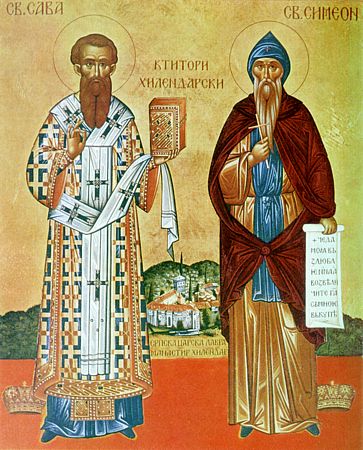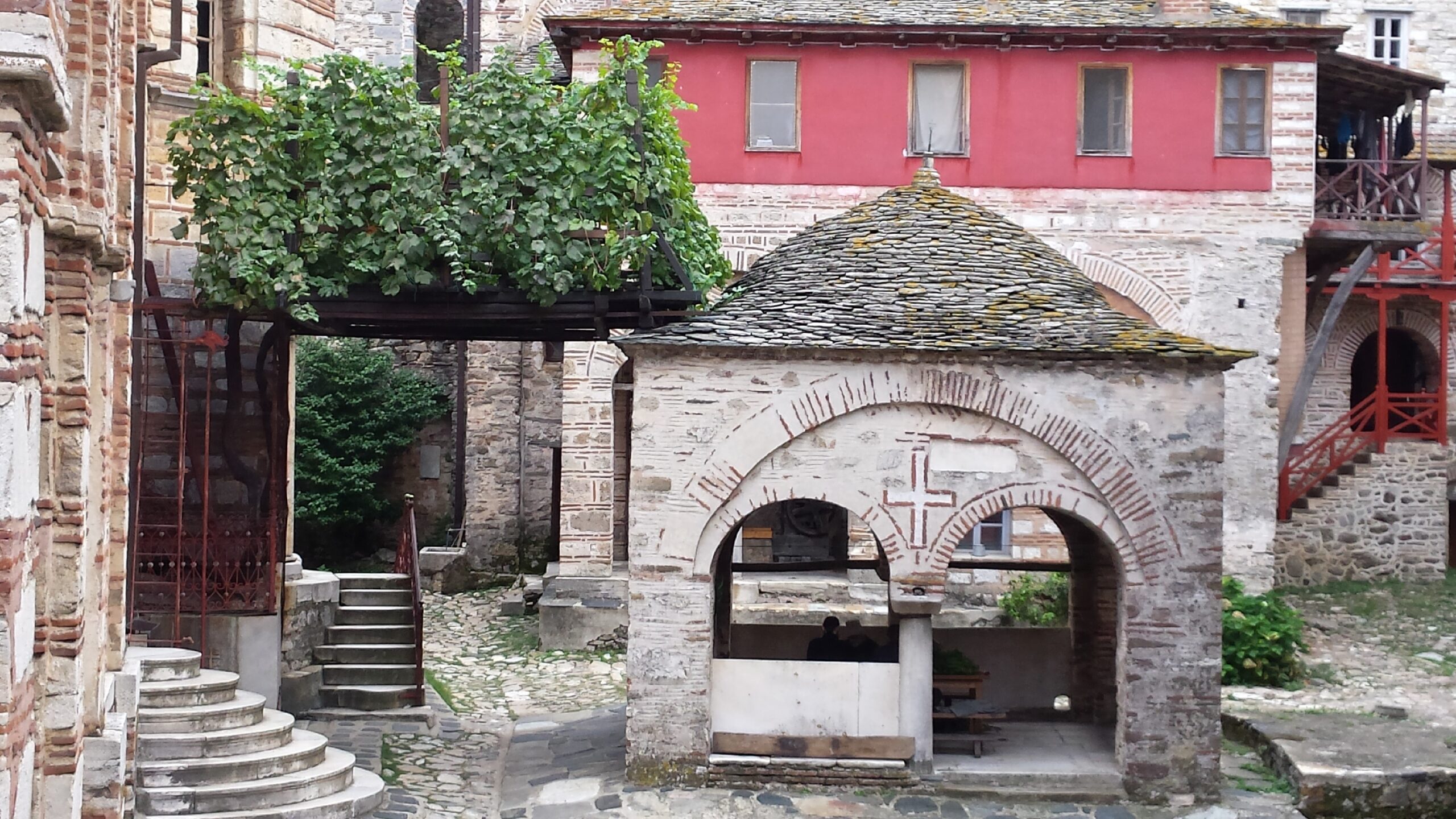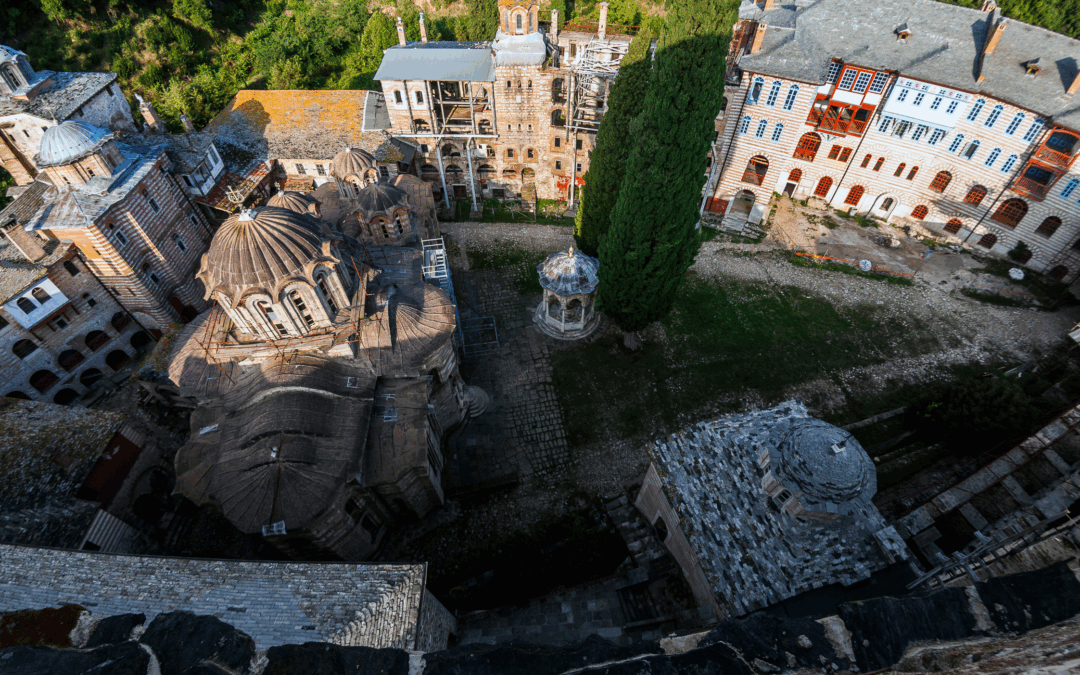OUR BLOG
Serbian Milestones: The Sacred Monastery of Mount Athos Watches Over Serbia
The Hilandar Monastery is the indicator of the condition of the Serbian people. This is how Holy Bishop Nikolaj Velimirović summed up the significance of the sacred monastery on Mount Athos, its spiritual aspects, and its ongoing prayers for the Serbian people and state which have lasted for more than 820 years. The wise spiritual father was deeply aware that the Serbian monastery on Mount Athos, inside the unique monastic state that has lived its pious life uninterruptedly since the Middle Ages, is the most important sacred place of the Serbian people and the richest treasury of its art, culture, education, science, etc. Hilandar represented the Serbian state back when Serbia had no official state, it served as a church in godless times, and in all of the epochs it has preserved collective memory with monastic dedication, thus protecting not only the material traces of the past but also the memory and identity of our people.

Being the endowment of Saint Sava and his father, Stefan Nemanja, or Saint Simeon, the founder of the Serbian state, it is one of the entries most imbued with meaning in the imagined lexicon of Serbian spirituality. That is because Hilandar has for eight centuries been the focal point of the purest Orthodox faith, a sanctuary and a pilgrimage site, and also an enduring treasury of the entire national culture, faithful keeper of tradition, and the finest spiritual school of our people.
Owing to the fact that it is located outside of the motherland and because of the specific mission and monastic regulation of Mount Athos, Hilandar is the only institution of our people that has functioned continuously since the Middle Ages. This monastery represents Serbia’s unfailing connection with its roots. The sacred monastery on Mount Athos, despite a history full of discontinuity, interruptions, revolutions, twists, and oblivion, has throughout the centuries served as the bridge that links Serbian present with its origins.

Hilandar is the southernmost point of Serbian culture and spirituality. Ever since Sava and Simeon, having retreated from the material word, laid the foundations for the monastery in 1198, dozens of peoples, faiths, ideologies and orders have traversed the Balkans. States changed, moved, expanded and diminished. There have been endless occupations, armies, and conquerors. Technological achievements have also kept moving the boundaries, changing the way of life, views, and choices of people. In this historical mess, what is truly fascinating is the peace with which Hilandar has endured owing to the dedication of its hegumens and monks to bring light to the Serbian people with their prayers and compliance.
Hilandar is the first Serbian university, and due to the synthesis of knowledge therein, the Serbian people were able to join the European Christian civilization and became its important part.

Much has been said and written about Hilandar, especially about its spiritual and cultural importance, but its arguably biggest role in the most difficult times is not that well-known. The Serbian royal lavra on Mount Athos during Ottoman rule was the only part of Serbia in which Serbian statehood was preserved extraterritorially. This was the legal basis for the renewal of Serbian statehood in the 19th century.
“The history of Hilandar shows that its monks played a major role in the life of the Serbian Church, first in its organisation and later in its administration. The most capable of the monks of Hilandar returned to the motherland to take leading positions, usually at the wish of the Serbian kings – becoming bishops or archbishops. Hilandar became one of the most important cultural and religious centres of medieval Serbia. The connections between the monastery of Mount Athos with the motherland have remained strong and that is why the history of Hilandar is a part of the past of the Serbian people”, noted academician Mirjana Živojinović in the monograph History of Hilandar: from the Founding of the Monastery in 1198 until 1335.

The treasury of Hilandar is one of the few in the world that can boast such unique treasures from all over the world. The real treasure is the spirituality that adds meaning to all material objects in Hilandar. Each item has a specific importance and role in the spiritual world. Many of these items are still used in liturgy and have only spiritual value for the monks.
Professor Dušan Milovanović, probably the most important researcher of Hilandar, meticulously inventoried the relics kept in the monastery. In the treasuries, churches, and archives of Hilandar, there are around 3500 icons, 1500 of which are medieval, including eight wonderworking ones, which are among the most valuable examples of Byzantine art and are revered by most Christians; 507 hand-written charters of medieval rulers; 1041 unique hand-written books with a total of 312,000 pages; scrolls; 80 books printed between the 15th and the 17th centuries, 40,000 books from the 17th century until today.
For an in-depth look at Hilandar Monastery and its remarkable treasury, along with a wide range of topics covering diplomacy, culture, and Serbia’s rich historical heritage, we invite you to explore Dipos Magazine.








 2018
2018